Tom's Hardware Verdict
If you don't require a pair of EPS connectors, there are better options in the market for the same price, or even less.
Pros
- +
Full power at 47 degrees Celsius
- +
Good build quality
- +
Long hold-up time
- +
Tight-enough load regulation
- +
Fully modular
- +
2x EPS connectors
- +
Double Ball-Bearing fan
Cons
- -
Expensive
- -
Noisy
- -
Mediocre transient response
- -
High ripple at +12V
- -
Very low efficiency at 5VSB
- -
Small number of peripheral connectors
- -
Wrongly configured +12V OCP and OPP
Why you can trust Tom's Hardware
Specifications and Part Analysis
The FSP Dagger Pro 650W ($125 on Newegg) has enough capacity to power a high-end GPU and a potent processor, like a Ryzen 3000 CPU and an RTX 2080. But not all the problems that we found in its predecessor, the Dagger 600W, have been addressed.
For starters, the efficiency of the 5VSB rail remains low and the ripple suppression at +12V is not good enough. Another major downside is the increased noise output, despite the semi-passive operation (which doesn't last long). For less money you can pick up the Corsair SF600, which outperforms the Dagger Pro unit in every area. That said, the SF600 doesn't have a pair of EPS (supplemental board power) connectors, so it will limit your mainboard selection.
FSP has upgraded its Dagger line with two new models, featuring 550W and 650W capacities. The strongest Dagger unit, with model number SDA2-650, will be evaluated in this review. Besides increased capacity, which doesn't look so impressive any more since there are SFX units with 700W and 750W capacities, the SDA2-650 is equipped with a 92mm, double ball-bearing fan, and also has a pair of EPS connectors. The latter provide compatibility with high-end motherboards.




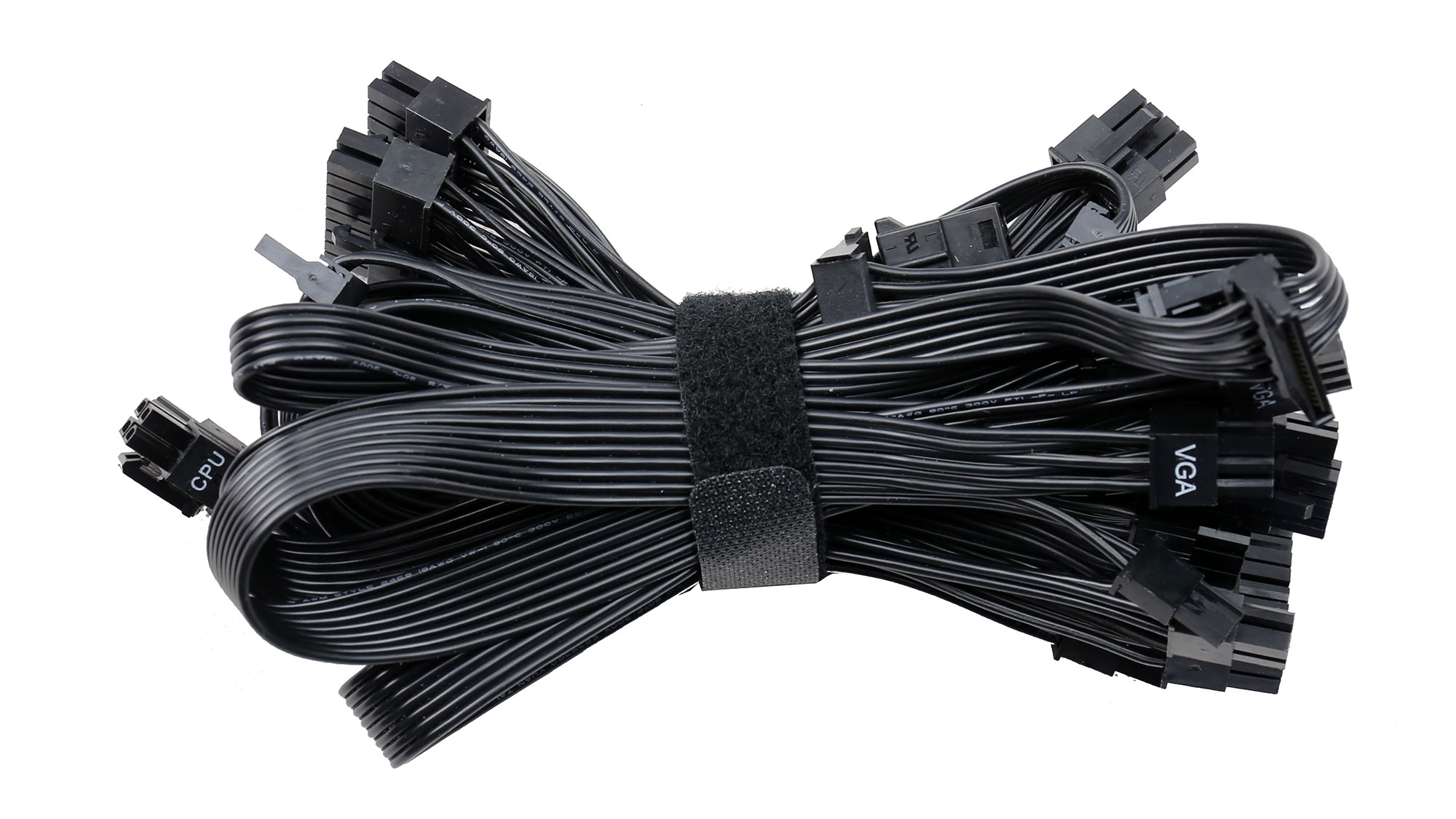
The previous Dagger model, with 600W capacity, failed to impress us mostly because of the ripple suppression problems at 3.3V, the low hold-up time and the inefficient 5VSB rail. It also came with only a single EPS and two PCIe connectors, which are not enough to fully utilize its capacity. FSP managed to address some of the problems, but unfortunately not all of them.





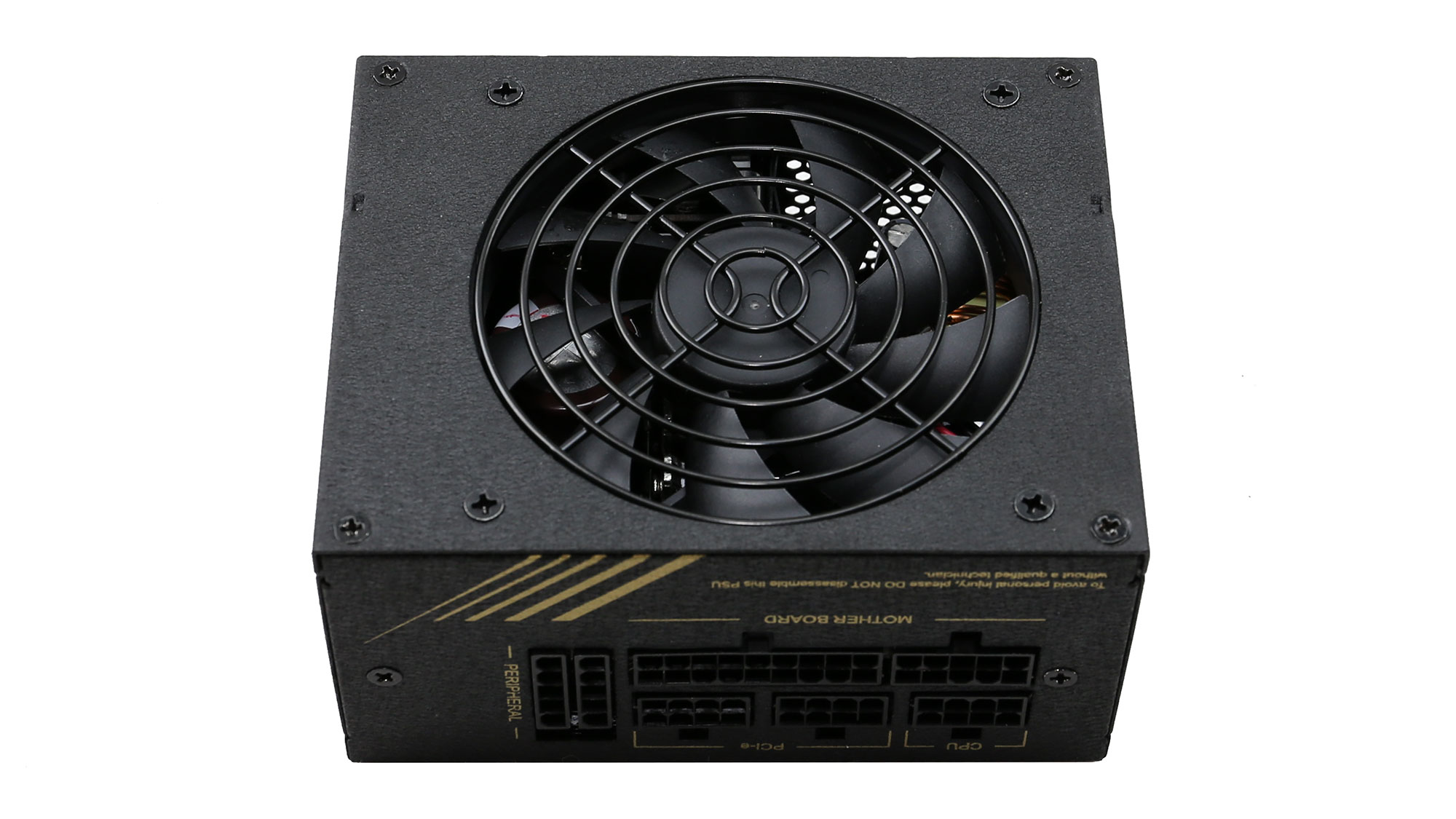

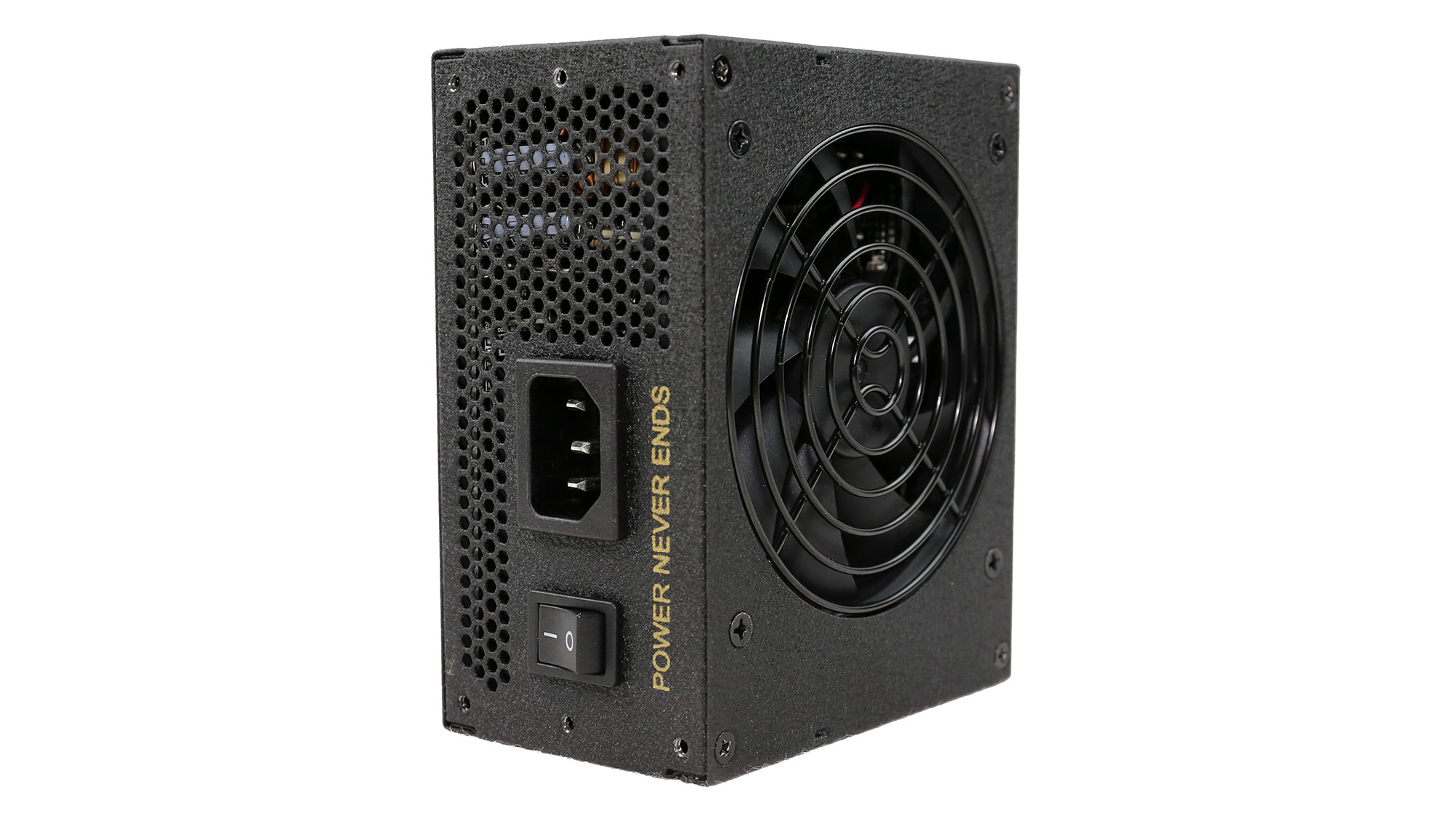


Specifications
| Manufacturer (OEM) | FSP |
|---|---|
| Max. DC Output | 650W |
| Efficiency | 80 PLUS Gold, ETA-S (82-85%) * |
| Noise | LAMBDA-S (40-45 dB[A]) * |
| Modular | ✓ (Fully) |
| Intel C6/C7 Power State Support | ✓ |
| Operating Temperature (Continuous Full Load) | 0 - 40°C |
| Over Voltage Protection | ✓ |
| Under Voltage Protection | ✓ |
| Over Power Protection | ✓ |
| Over Current (+12V) Protection | ✓ |
| Over Temperature Protection | ✓ |
| Short Circuit Protection | ✓ |
| Surge Protection | ✓ |
| Inrush Current Protection | ✓ |
| Fan Failure Protection | ✗ |
| No Load Operation | ✓ |
| Cooling | 92mm Double Ball Bearing Fan (PLA09215B12H) |
| Semi-Passive Operation | ✓ |
| Dimensions (W x H x D) | 125 x 65 x 98mm |
| Weight | 0.89 kg (1.96 lb) |
| Form Factor | SFX, EPS 2.92 |
| Warranty | 7 Years |
* The SDA2-650 is not certified by Cybenetics, but based on our results it meets the depicted levels/badges.
Power Specifications
| Rail | 3.3V | 5V | 12V | 5VSB | -12V | |
|---|---|---|---|---|---|---|
| Max. Power | Amps | 20 | 20 | 54 | 2.5 | 0.3 |
| Watts | 120 | 648 | 12.5 | 3.6 | ||
| Total Max. Power (W) | 650 |
Cables and Connectors
| Modular Cables | ||||
|---|---|---|---|---|
| Description | Cable Count | Connector Count (Total) | Gauge | In Cable Capacitors |
| ATX connector 20+4 pin (500mm) | 1 | 1 | 18-22AWG | No |
| 8 pin EPS12V (700mm) / 4+4 pin EPS12V (150mm) | 1 | 2 | 18AWG | No |
| 6+2 pin PCIe (350mm) | 2 | 2 | 18AWG | No |
| SATA (350mm+100mm+100mm) / 4-pin Molex (+100mm) | 1 | 3 / 1 | 18AWG | No |
| SATA (350mm+100mm) / 4-pin Molex (+100mm) / FDD (+100mm) | 1 | 2 / 1 / 1 | 18-22AWG | No |
| AC Power Cord (1380mm) - C13 coupler | 1 | 1 | 18AWG | - |
It's great that this unit comes with a pair of EPS connectors, but it is a real disappointment to have them both on the same cable, with 18AWG gauges. This is a major shortcoming since a single EPS connector can deliver up to 336W. Even if 16-gauge wires were used, the cable still wouldn't be able to handle full output from two EPS connectors. We should note here that the unit's official capacity is 650W, but we pushed it up to 796.78W during the OPP evaluation, so it can push those EPS connectors to their limits.
The number of PCIe connectors is low at two, and the same goes for the peripheral connectors. Moreover, there is no need for the legacy floppy disk connector to be fixed. Instead of a Berg connector, FSP should install an additional 4-pin Molex.
Get Tom's Hardware's best news and in-depth reviews, straight to your inbox.
The ATX and EPS cables are very long, given that this is an SFX unit, while the PCIe and peripheral cables have typical lengths. The distance between the peripheral connectors is low at 100mm. But in this case, we won't complain since SFX units are meant for small chassis.






Component Analysis
We strongly encourage you to have a look at our PSUs 101 article, which provides valuable information about PSUs and their operation, allowing you to better understand the components we're about to discuss.
| General Data | |
|---|---|
| Manufacturer (OEM) | FSP |
| PCB Type | Double Sided |
| Primary Side | |
| Transient Filter | 4x Y caps, 2x X caps, 2x CM chokes, 1x MOV |
| Inrush Protection | NTC Thermistor & Relay |
| Bridge Rectifier(s) | 1x HY GBU1506U (600V, 15A @ 100°C) |
| APFC MOSFETS | 2x ROHM Semiconductor R6030KNX (600V, 30A, 0.13Ohm) |
| APFC Boost Diode | 2x Infineon IDD06SG60C (600V, 6A @ 130°C) |
| Hold-up Cap(s) | 1x Nippon Chemi-Con (420V, 330uF, 2000h @ 105°C, KMZ) |
| Main Switch | 1x Infineon SPA17N80C3 (800V, 11A @ 100°C, 0.29Ohm) |
| Reset Switch | 1x Infineon IPD80R2K8CE (800V, 1.1A @ 100°C, 2.8Ohm) |
| Combo APFC/Switching Controller | FSP 6600 IC |
| Topology | Primary side: Active Clamp Reset Forward Secondary side: Synchronous Rectification & DC-DC converters |
| Secondary Side | |
| +12V MOSFETS | 2x Infineon IPP023NE7N3 G (75V, 120A @ 100°C, 2.3mOhm) |
| 5V & 3.3V | DC-DC Converters:4x Infineon BSC0902NS (30V, 67A @ 100°C, 2.6mOhm) PWM Controllers: ANPEC APW7159C |
| Filtering Capacitors | Electrolytics: 2x Rubycon (3-6,000h @ 105°C, YXG), 2x Rubycon (6-10000h @ 105°C, ZLH), 1x Nippon Chemi-Con (2-8,000h @ 105°C, LXZ) Polymers: Teapo |
| Supervisor IC | SITI PS113A ( OVP, UVP, SCP, PG) |
| Fan Model | Power Logic PLA09215B12H (92mm, 12V, 0.55A, Double Ball Bearing Fan) |
| 5VSB Circuit | |
| Switching FET | CEB02N7G |
| Standby PWM Controller | FSP 6601 IC (?) |

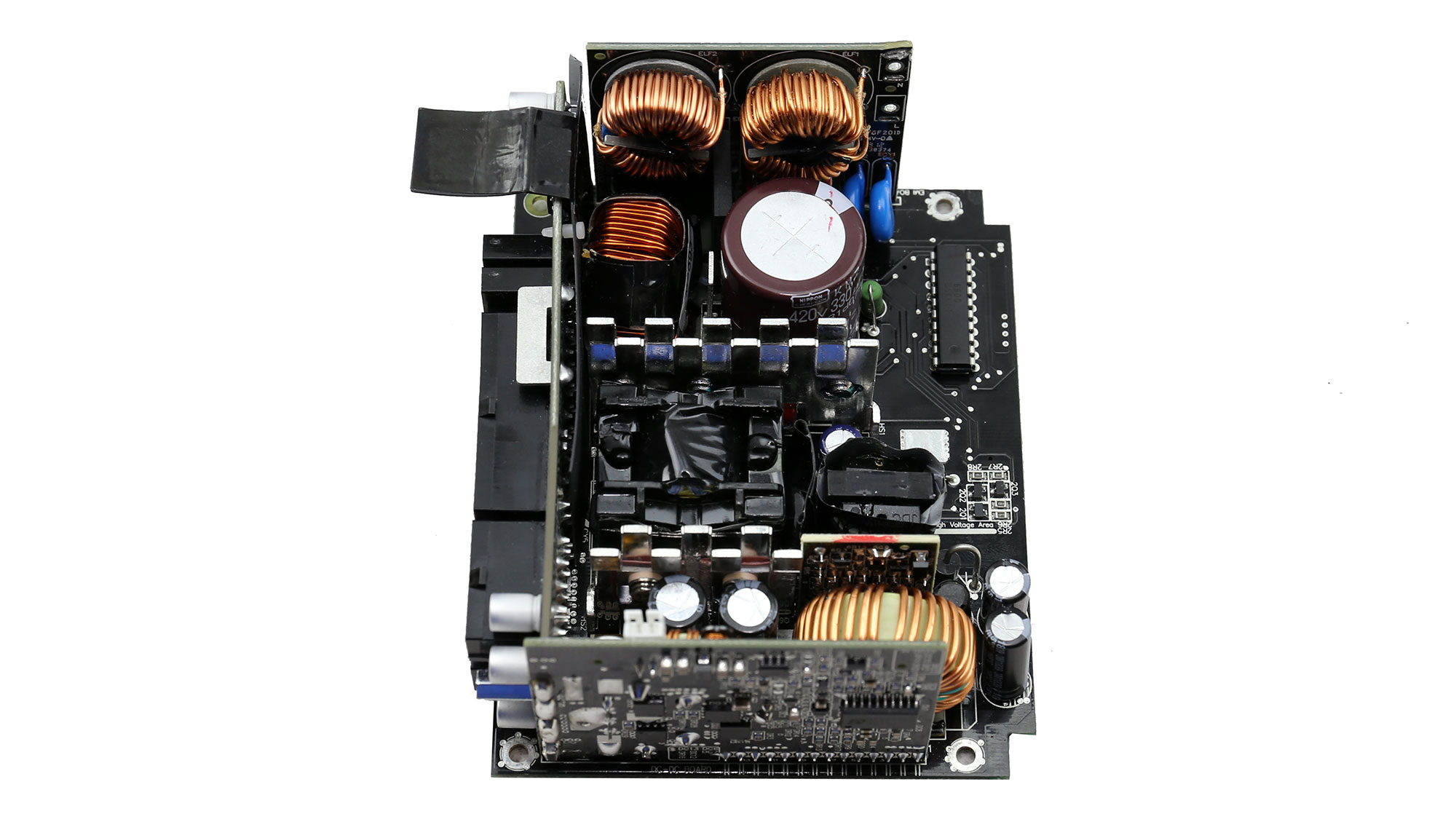

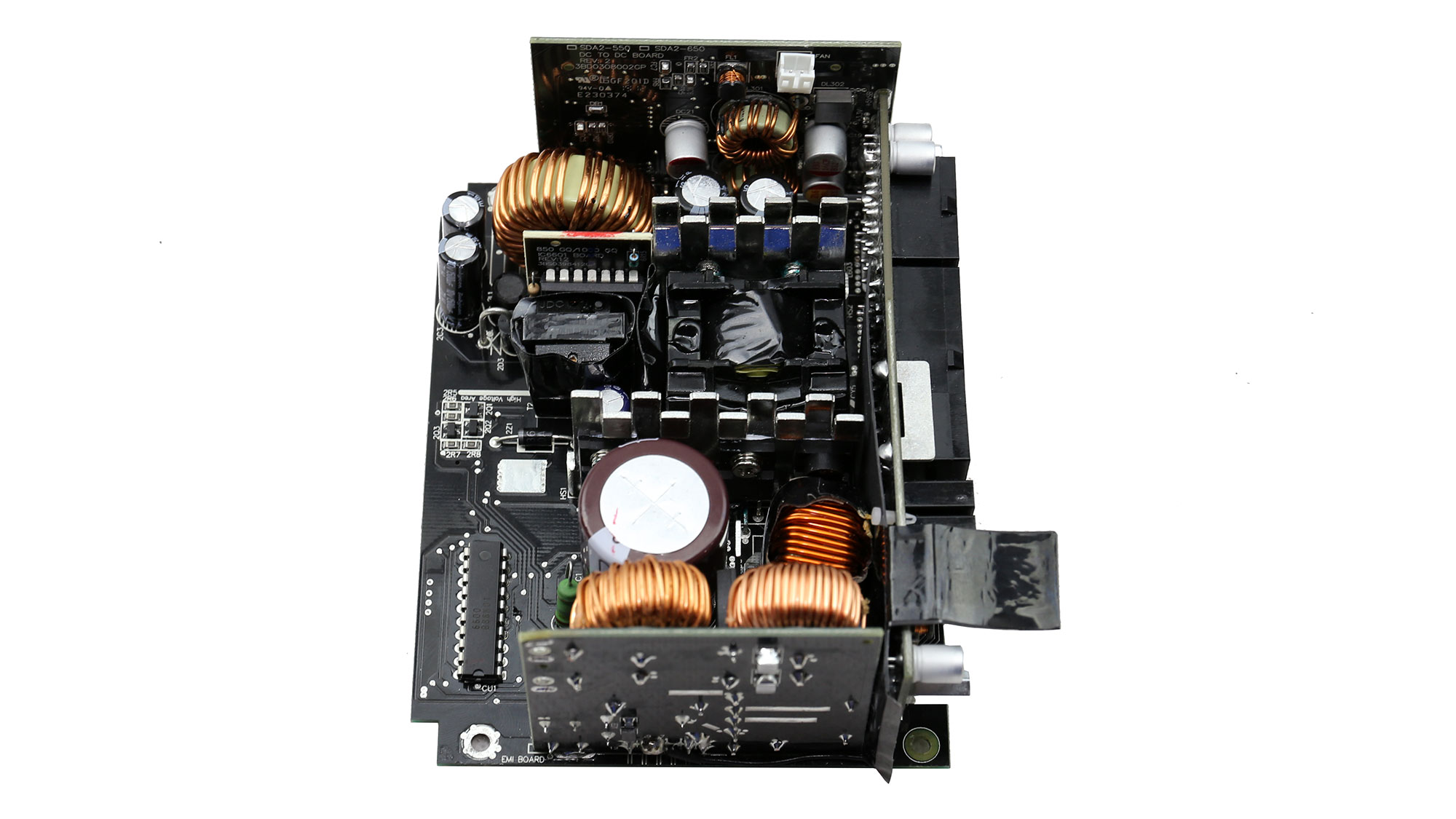

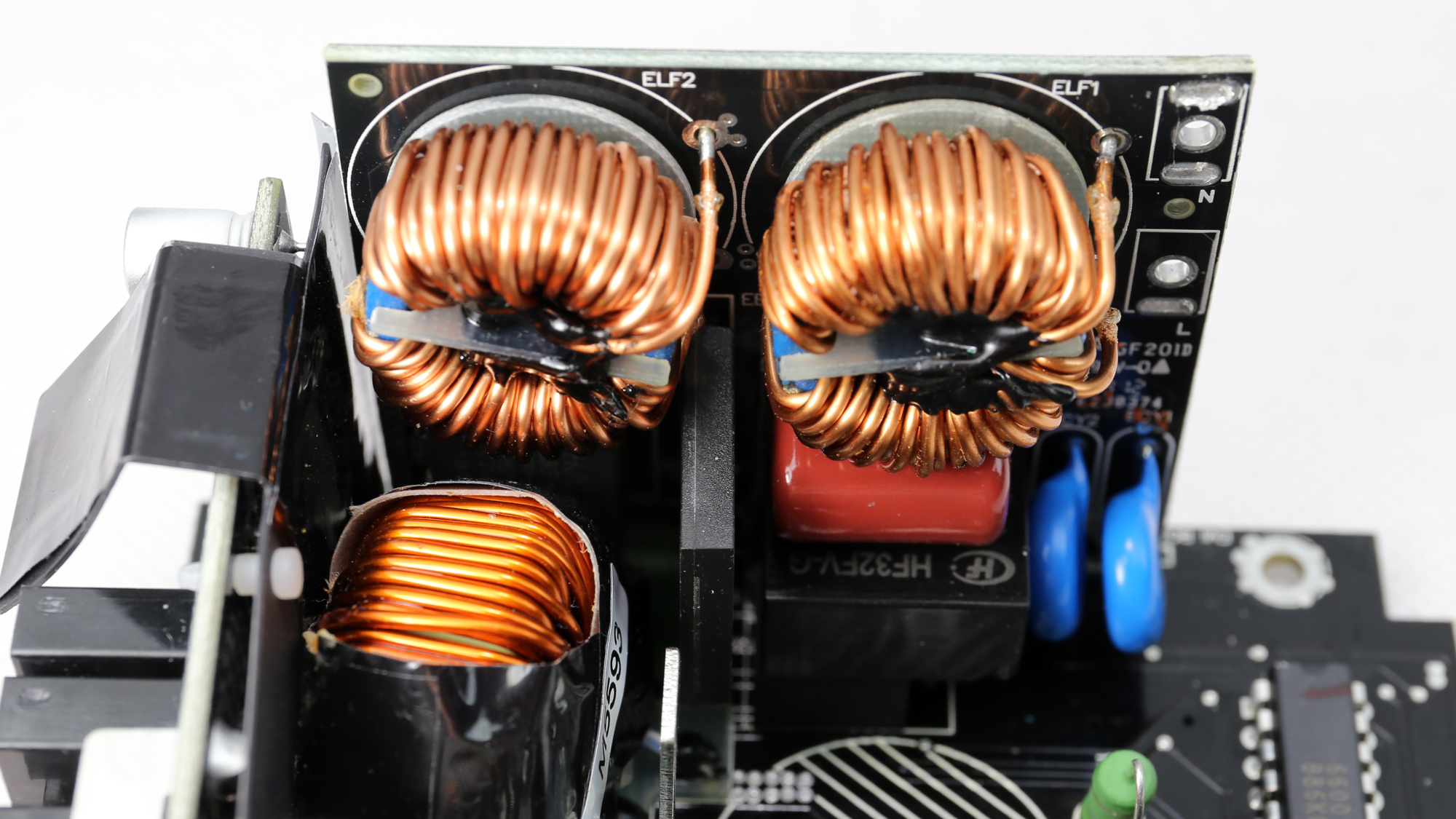
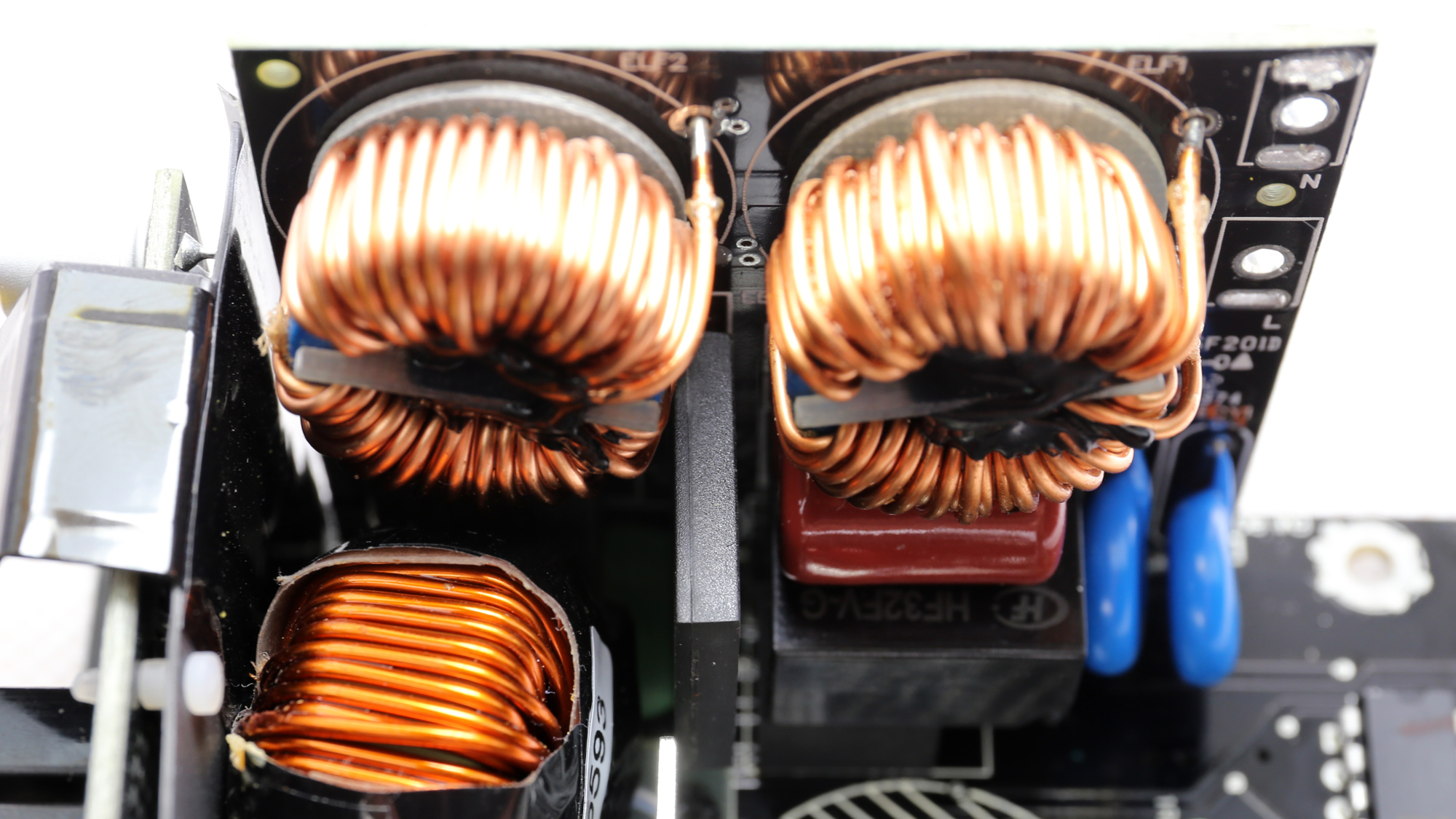




The previous Dagger used a half-bridge topology, while the new ones utilize an Active Clamp Reset Forward (ACRF) scheme on the primary side. Thanks to the ACRF topology, the production is lowered since fewer components are required, and the hold-up time is increased so a lower capacity bulk cap can be used. On the other hand, ACRF doesn't perform so well in transient loads, which are a daily routine for any PSU.
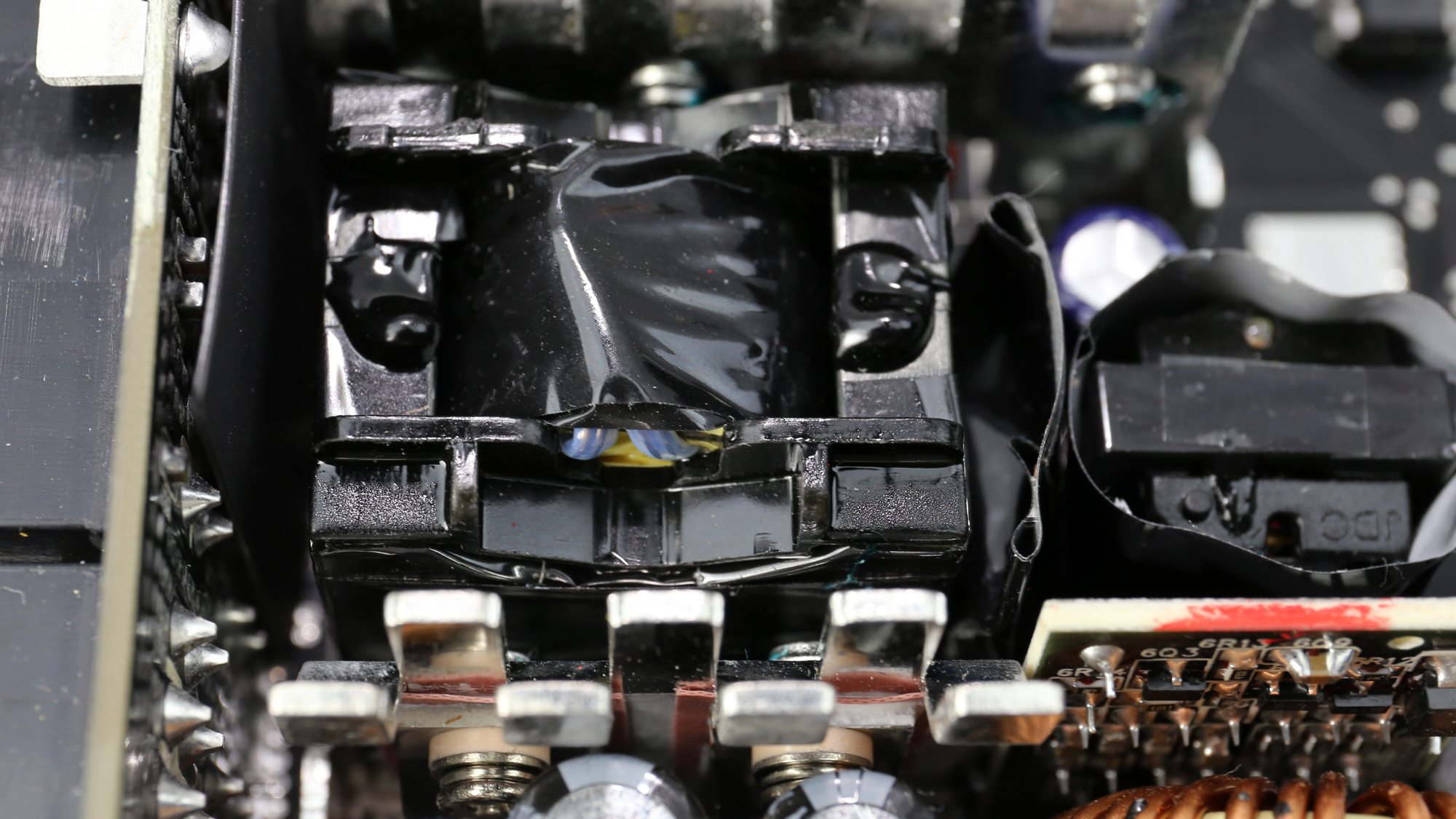

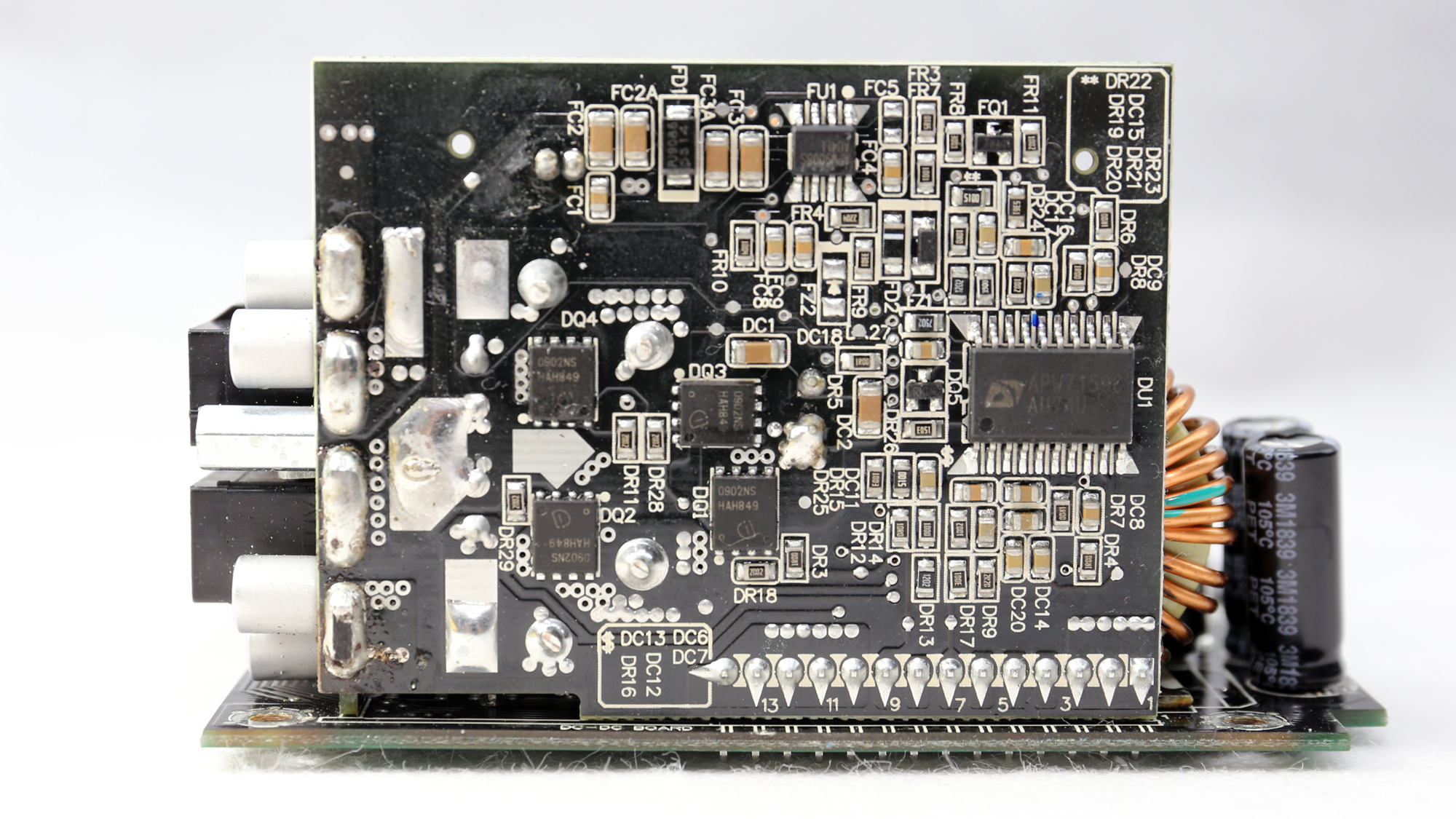

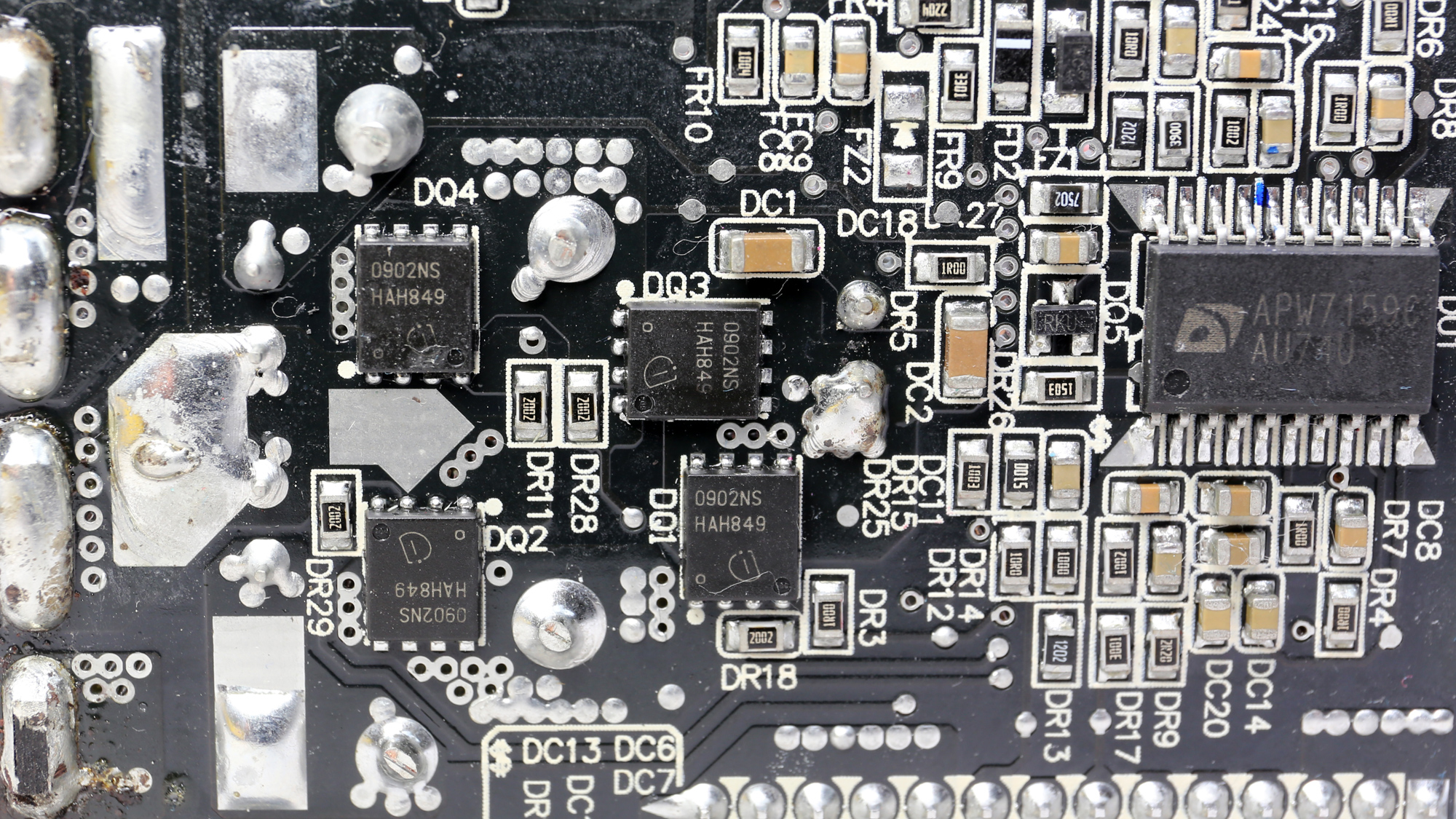




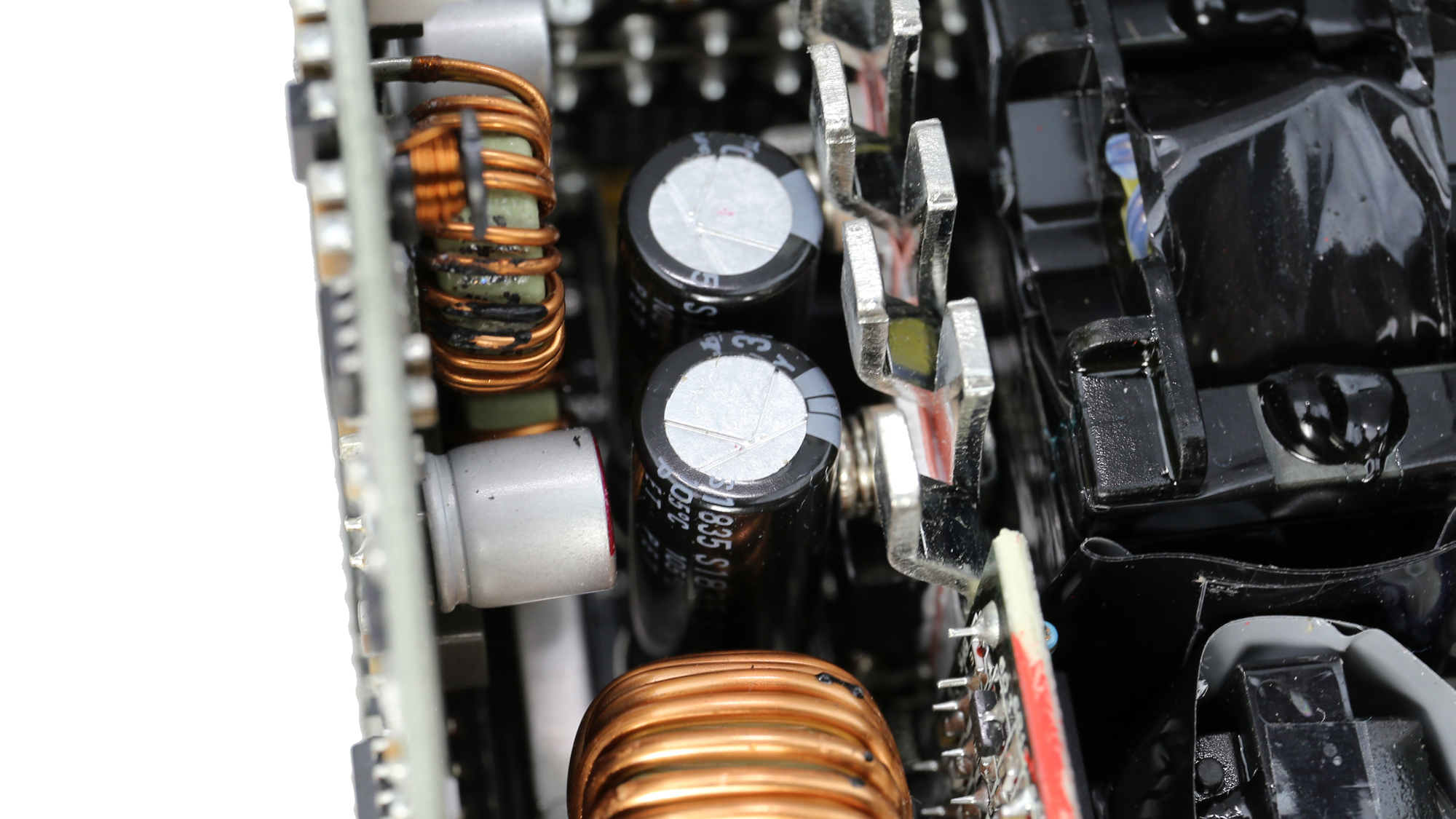
The EVGA 650 GM, which is made by FSP, might also use an ACRF topology, but we noticed many differences between those two platforms. It makes us wonder why FSP didn't utilize the same (better) platforms with the EVGA GM in the Daggers.


At the front of the modular board, several polymer caps, by Teapo, provide an extra ripple filtering layer. On this side, we also find the supervisor IC, a SITI PS113A.





The soldering quality is quite good.
The cooling fan uses a double ball-bearing, which is ideal for high operating temperatures. But, it will make more noise than an FDB fan under the same operating conditions.
MORE: Best Power Supplies
MORE: How We Test Power Supplies
MORE: All Power Supply Content
Current page: Specifications and Part Analysis
Next Page Load Regulation, Hold-Up Time, Inrush Current, Efficiency and Noise
Aris Mpitziopoulos is a contributing editor at Tom's Hardware, covering PSUs.
